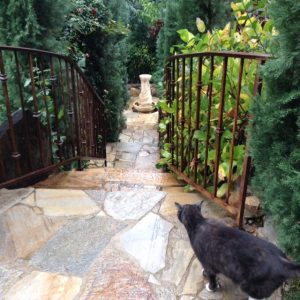Be Mindful Of Your Microclimates
Have you ever fallen in love with a particular plant you saw in your neighborhood, tried to grow it yourself (maybe more than once) only to watch it die, or just not thrive? What the heck? You and your neighbor are in the same foothill climate zone, right? You know you didn’t under or overwater it. And because you checked on it frequently, you know it didn’t display any signs of insect infestations or damage from disease. It just seemed to, well, fade away.
The problem, and solution, might lie in a microclimate in your garden. Microclimates are areas of your landscape that might be cooler, warmer, wetter, drier, or more or less affected by winds, due to topography, structures, and orientation to sun exposure. These variables in your own garden can make a big difference to a lot of plants.
Before you give up on those wishes for azaleas, California lilac, or any other suffering plant, consider your existing, and maybe even constructed, microclimates.
Highs and Lows. We all know that cold air sinks and hot air rises. But how often do gardeners actually take this into consideration when positioning a new plant in the yard? If you live in something like a valley, or if you have a garden at the bottom of an incline in your yard, remember that those lower areas are going to experience colder temperatures in general, and will be more susceptible to frost, than areas on higher ground. Plants that cannot tolerate the colder extremes might just make it in a more elevated spot.
Sun Exposure. If a dearly beloved plant isn’t doing well on the north side of your house, try moving it to the sunnier, warmer south or east side. The temperature and sun exposure difference can be quite dramatic.
Winds. This might be the most difficult microclimate to deal with. If there is a pocket in your yard that consistently experiences wind that is damaging plants, think about creating barriers, such as landscape rocks, fencing, or plant a taller shrub or tree that doesn’t mind the wind.
Structures. You can create a warmer, sunnier “microclimate” by positioning a plant next to a highly reflective surface, such as against a light-colored house or fence. The light and heat generated from structures, no matter their orientation, can provide just what a plant needs to thrive in an otherwise dicey location. And the converse is true: If a plant is wilting in the heat of your hilltop home, consider moving it to the cooler north side, or under an eve or pergola that will provide added protection from the sun.
Hardscape. Pavement, stone paths, and rock walls absorb an enormous amount of heat and radiate it back to the surrounding landscape, which can be good news and bad news. In the hottest summer months, in areas not shaded by trees, plants situated next to hardscape can fry if they aren’t heat lovers. On the other hand, that same hardscape will radiate heat into the night, which can protect plants that do not like chilly evenings.
Raised Beds and Terraces. Like hilltops and hillside slopes, raised beds, terraces, decks, and roofs can warm and drain earlier in spring, especially if they are oriented toward the south.
I remember the summer I finally realized the conditions on the south-facing deck extending off of my white, hilltop house created a blast furnace effect. Many a potted plant there—which also dried out faster than in-ground plantings—was doomed.
So, take an inventory of where your microclimates are and move, plant, or protect existing or new plants to give them all the best chance to thrive.
Rachel Oppedahl is a University of California Cooperative Extension Master Gardener of Tuolumne County.
University of California Cooperative Extension Central Sierra Master Gardeners can answer home gardening questions. Call 209-533-5912 in Tuolumne County, 209-754-2880 in Calaveras County or fill out

